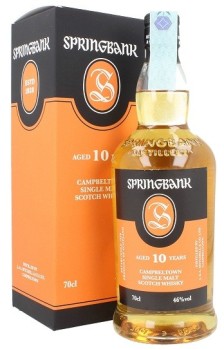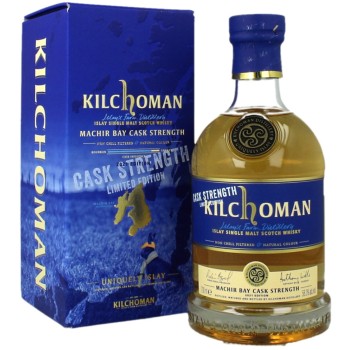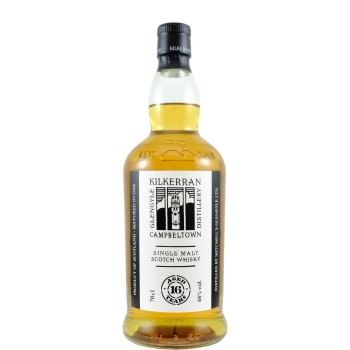How is whisky made?
Although whiskey is a rather simple drink, it encompasses an incredible depth that makes it infinitely appreciable compared to many other spirits.
Yet, it is made only of grain, water and yeast!
The range of aromas and flavors encompassed in an aged whiskey is truly wide and seductive at the same time.
But how is it possible to bring such a product to life with such a basic amount of ingredients?
In this article we will find out how whiskey is produced, analyzing the main steps involved in this fascinating process.
The stages of whiskey production
The first step in whiskey production is the choice of grain.
Barley is probably the most common, proving to be the only cereal in Scotch malt, but corn, wheat and rye are also used.
A dose of malted barley is present in most whiskies, while corn is the main grain for making bourbon and Tennessee whiskey. Rye, on the other hand, is the key ingredient in rye whiskey.
When we talk about "grain whiskey," we mean a blended whiskey, that is, made from grains other than barley, mostly corn and wheat.
Malting
The first stage of whiskey production is malting.
In order to activate enzymes and maximize the starch content, the barley undergoes a malting process, and is then transformed into sugar and then into alcohol.
During grain drying, if peat is burned, the whiskey will have a smoky flavor.
Most distilleries use outside maltsters, but there are some equipped with floor malting facilities.
Mashing
Now, the malt is ground down to grist, a particular coarse flour.
The latter is then mixed with hot water inside a mash tun, and subjected to saccharification to extract the soluble sugars.
Doing so produces the wort, which is sugar-laden water that is piped for its use.
It is possible to combine grist with other grains in the mash tun, so as to produce unmalted whiskies.
Fermentation
In fermentation, wort is mixed with yeast and heated inside a washback, a fermentation vat.
Feeding on the sugars in the wort, the yeast produces alcohol and carbon dioxide, initiating fermentation.
This phase lasts between 48 and 74 hours, generating a kind of strong, sour beer called wash, or fermented malt.
Distillation
Now it is time for the distillation of the wash.
A distillation column is used for continuous distillation or a pot still for discontinuous distillation.
In both cases, the purpose is the same: to extract the alcohol from the wash.
Distillation is done as follows: wash is boiled and alcohol separates as vapor, as the latter boils at a lower temperature than water. The vapor is therefore condensed to liquid.
When the distillation is pot still, the distillate is condensed through a shell and tube condenser or inside a worm tub, which is a tank with a copper coil.
With the worm tub, an oilier, heavier distillate is produced.
Most whiskey is distilled twice, first in a wash still and second in a spirit still.
To be distilled three times, however, is Irish whiskey, so that a purer drink is obtained.
Cutting
When the pot still system is adopted, a spirit safe is used to allow distillers to evaluate the spirit.
The heads and tails, that is, the first and last parts of the second distillation, are not pure enough to be used.
In fact, they are redistilled together with the phlegmas from the first distillation.
The most palatable and usable part of the distillate is the middle part, also called the heart or new-make. The heart can be drunk and has certain characteristics that will be found in the final product.
However, this part cannot be called whiskey because it has not yet achieved color or depth of flavor.
Filling the casks
The alcohol content of the new-make must be raised to the optimal percentage for aging, so it is slightly reduced to about 63-64% vol.
The distillate is then piped into oak casks from a collecting tank.
While used casks are used in Scotland, new, charred casks are used in the United States.
Aging
Aging is a key stage because it is the process that transforms new make into the complex-tasting, deep-colored beverage we call whiskey.
The length of aging varies according to legal requirements (at least 3 years for Scotch), the type and size of barrels used, and climatic conditions.
Blending
Blend is the best-selling type of whiskey and is a mixture of malt and grain whiskies.
The blender's job is to combine several whiskies and marry the flavors so as to achieve uniformity and balance in the final product.
The blends are always tailored to the specific tastes or markets for which the whisky is intended.
Bottling
The final stage of this fascinating journey is bottling.
Bottling is almost always automated through equipment, but it is not excluded that it may be done by hand along with labeling.
Finally, the whiskey is often diluted with water to an alcohol volume of 40 or 43 percent.
Alternatively, cask strenght bottling is chosen, that is, at the strength at which the whiskey leaves the cask (between 53 and 65 percent vol).






